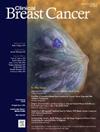免疫炎症指标对乳腺癌内分泌治疗患者的预后价值:一项系统综述和荟萃分析
IF 2.5
3区 医学
Q2 ONCOLOGY
引用次数: 0
摘要
目的:研究提示全身免疫炎症指数(SII)、中性粒细胞淋巴细胞(NLR)、血小板淋巴细胞(PLR)和淋巴细胞单核细胞(LMR)可作为乳腺癌(BC)的潜在预后指标。然而,它对接受内分泌治疗(ET)的BC患者的预后价值仍不确定。方法:系统检索Embase、Cochrane Library、PubMed、Web of Science,检索自成立至2024年5月5日免疫炎症指标对接受ET治疗的BC患者预后意义的研究。总生存期(OS)、无进展生存期(PFS)和无病生存期(DFS)为主要结局,采用95%可信区间(CI)的风险比(HR)进行统计学分析。进行敏感性和亚组分析以探索异质性的来源。采用STATA 15.1和Review Manager 5.4进行数据分析。结果:纳入了15项研究,27个队列,3168例接受ET治疗的BC患者。结果显示,低NLR与延长OS相关(HR = 2.19, 95% CI, 1.67-2.87;P < 0.00001)和PFS (HR = 1.64, 95% CI, 1.32-2.04;P < 0.00001)。高LMR与较长的生存期相关(HR = 2.67, 95% CI, 1.64-4.33;P < 0.0001)。低PLR与PFS延长显著相关(HR = 1.89, 95% CI, 1.40-2.55;P < 0.0001)。此外,低PLR与较长的OS相关(HR = 2.16, 95% CI, 1.03-4.52, P = 0.04),但敏感性分析显示其显著性不够强。所有亚组分析都显示出总体上强有力的结果。结论:免疫炎症指标可能作为接受ET治疗的BC患者的预后生物标志物,有助于更明智的BC治疗决策。本文章由计算机程序翻译,如有差异,请以英文原文为准。
Prognostic Value of Immune-Inflammation Indexes for Breast Cancer Patients Undergoing Endocrine Therapy: A Systematic Review and Meta-analysis
Purpose
Research suggests that systemic immune-inflammation index (SII), neutrophil lymphocyte (NLR), platelet lymphocyte (PLR) and lymphocyte monocyte (LMR) can act as potential prognostic indicators for breast cancer (BC). However, its prognostic value for BC patients undergoing endocrine therapy (ET) remains inconclusive.
Methods
We systematically searched Embase, Cochrane Library, PubMed, and Web of Science for studies on the prognostic significance of immune-inflammation indexes for BC patients undergoing ET from inception to May 5, 2024. Overall survival (OS), progression-free survival (PFS), and disease-free survival (DFS) were the primary outcomes, and they were statistically analyzed by hazard ratios (HR) with 95% confidence intervals (CI). Sensitivity and subgroup analyses were performed to explore the source of heterogeneity. STATA 15.1 and Review Manager 5.4 were adopted for data analyses.
Results
Fifteen studies with 27 cohorts of 3168 BC patients undergoing ET were included. The results showed that low NLR was associated with prolonged OS (HR = 2.19, 95% CI, 1.67-2.87; P < .00001) and PFS (HR = 1.64, 95% CI, 1.32-2.04; P < .00001) in overall BC patients receiving ET. High LMR was associated with longer OS (HR = 2.67, 95% CI, 1.64-4.33; P < .0001) in the overall BC patients undergoing ET. Low PLR was significantly associated with prolonged PFS (HR = 1.89, 95% CI, 1.40-2.55; P < .0001). Additionally, low PLR was associated with longer OS (HR = 2.16, 95% CI, 1.03-4.52, P = .04), but sensitivity analysis showed that its significance was not robust enough. All subgroup analyses revealed overall roboust results.
Conclusion
Immune-inflammation indexes can potentially act as prognostic biomarkers for BC patients undergoing ET, contributing to wiser decision-making in BC treatment.
求助全文
通过发布文献求助,成功后即可免费获取论文全文。
去求助
来源期刊

Clinical breast cancer
医学-肿瘤学
CiteScore
5.40
自引率
3.20%
发文量
174
审稿时长
48 days
期刊介绍:
Clinical Breast Cancer is a peer-reviewed bimonthly journal that publishes original articles describing various aspects of clinical and translational research of breast cancer. Clinical Breast Cancer is devoted to articles on detection, diagnosis, prevention, and treatment of breast cancer. The main emphasis is on recent scientific developments in all areas related to breast cancer. Specific areas of interest include clinical research reports from various therapeutic modalities, cancer genetics, drug sensitivity and resistance, novel imaging, tumor genomics, biomarkers, and chemoprevention strategies.
 求助内容:
求助内容: 应助结果提醒方式:
应助结果提醒方式:


